As the possibility of a potential recession rises, most businesses are going into a cost-cutting mode1. Mass layoffs are one of the measures companies are taking toward more efficiency. Crowdsourcing can be an effective way for businesses to reduce costs and help economies lower unemployment.
According to a McKinsey estimate2, the use of these platforms could boost business output by up to 9% while lowering overall human resources and talent acquisition costs by up to 7%. Crowdsourcing platforms also offer various benefits for the global economy (See Figure 1).
Figure 1: Projected global benefits of crowdsourcing platforms
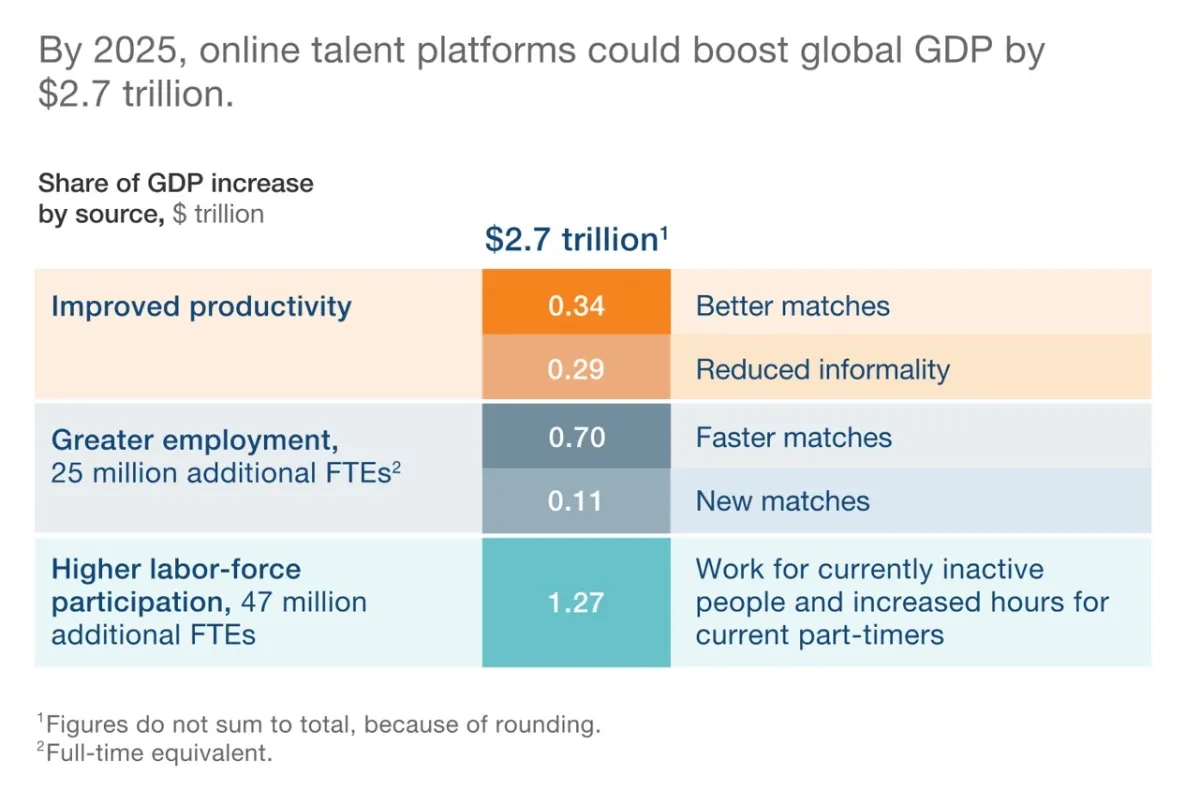
To effectively leverage crowdsourcing in your business, we recommend obtaining in-depth knowledge on how and where it can benefit your business the most.
This article explores the following:
- What is crowdsourcing?
- What are the types of crowdsourcing?
- What are its benefits?
- What are the key crowdsourcing challenges and their solutions?
What is crowdsourcing?
Crowdsourcing is a process of obtaining services, ideas, or content by enlisting the services of a large number of people, typically over the internet. It’s a crowdsourced method of outsourcing human intelligence tasks traditionally performed by employees, allowing businesses to tap into an online pool of talent quickly and cost-effectively. People can be crowdsourced for a variety of business and tech tasks, such as content creation, designing, coding, data collection, market research, etc.
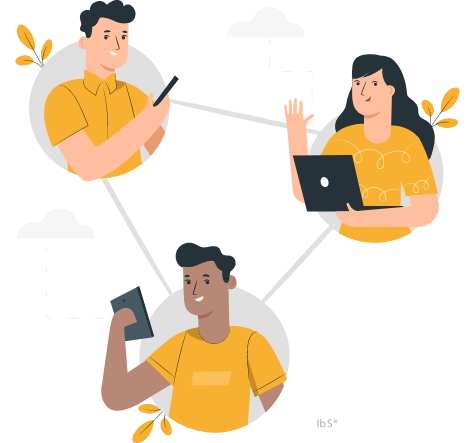
What are the types of crowdsourcing?
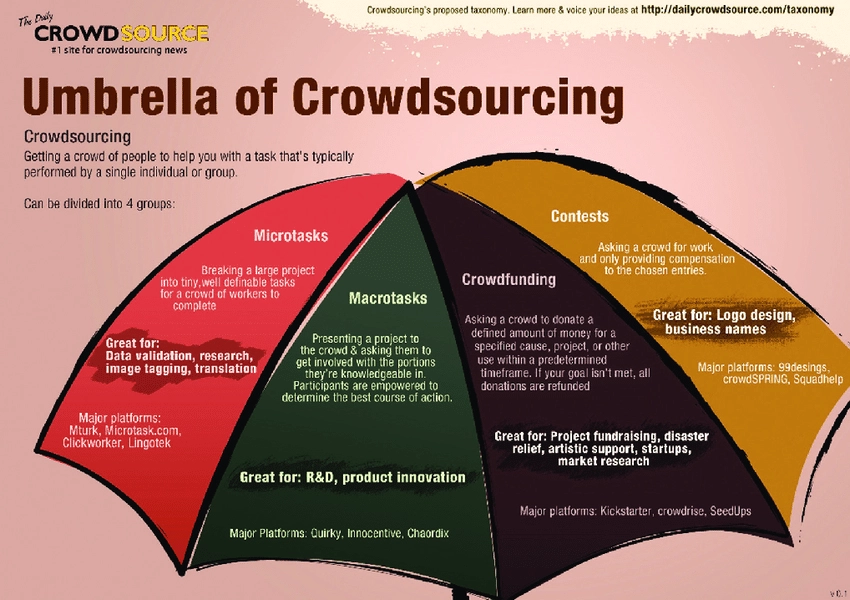
1. Microtasking
- How it’s done: In this approach, we fragment a large project into smaller, well-defined microtasks for a crowd to complete. They require short-term commitments and offer relatively shorter incentives.
- Most suitable for: Data collection, data validation, data transcription, research, image tagging, translations, etc.
2. Macrotasking
- How it’s done: The crowd is asked to select the portion of the project in which they are most knowledgeable and complete it with the best course of action.
- Most suitable for: R&D, project development, etc. (All crowdsourcing projects that are difficult to break into smaller fragments).
3. Crowdfunding
- How it’s done: Crowdfunding is a way of crowdsourcing funding from a large number of people in exchange for equity or other rewards. It enables startups, entrepreneurs, and businesses to raise money for their projects or causes by collecting small amounts of money from a large number of individuals.
- Most suitable for: product fundraising, startups, disaster support, market research, etc.
4. Contests
- How it’s done: A crowdsourcing project is offered to a crowd to complete, and the right one is chosen without compensation.
- Most suitable for: Logo and poster design, business name search, etc.
Note: The aforementioned types or approaches are not mutually exclusive.
What are its benefits?
Crowdsourcing is becoming increasingly popular among businesses and technology suppliers due to its advantages. This section highlights some top benefits of crowdsourcing.
1. Speed
Crowdsourcing enables businesses to complete tasks more efficiently, as it provides access to a vast pool of talent from around the world. This is mainly because large projects are broken down, distributed, and completed by multiple people or teams working in parallel.
2. Cost saving
In terms of cost savings, crowdsourcing can help companies reduce expenses by lowering costs associated with recruiting, training, and managing workers, as well as other administrative costs.
3. Diversity
Crowdsourcing enables businesses to leverage a diverse range of skills and perspectives, leading to more innovative solutions. This can lead to better products and services as crowdsourced workers bring their expertise, experience, and innovative ideas to the table.
For instance, a speech recognition system might require voice data in multiple languages for training. Gathering such diverse datasets can be expensive and time-consuming if done in-house. Since the crowd is typically international, it can be easier to gather multilingual datasets through crowdsourcing.
Top 4 business & tech use cases of crowdsourcing
Crowdsourcing can be utilized in various ways in a business, as it provides access to a vast pool of talent that can help achieve goals. However, it is essential to remember that crowdsourcing is not a one-size-fits-all solution and that businesses should only crowdsource tasks that are suitable for outsourcing.
For example, if a business needs to develop software, crowdsourcing might not be the right fit, and it would be better to hire experienced developers. However, the tasks of collecting training data and testing can be crowdsourced.
Here are some areas that can benefit from crowdsourcing:
1. AI/ML development
Crowdsourcing can be used to help in AI/ML development in areas such as crowdsourced data collection, data annotation, algorithm creation, etc. The dataset can be sourced from a diverse team of data collectors and annotators to train AI models.
For AI algorithms, crowdsourcing can fulfill the following tasks:
- Feature engineering,
- Hyperparameter tuning,
- Debugging algorithms, etc.
2. Market research & promotion
Crowdsourcing can be used to quickly and cost-effectively collect data for market research. Brands can use crowdsourcing to survey their target audiences and gather feedback on products or services. This helps companies better understand their customers, enabling them to make more informed decisions regarding product development, marketing strategies, and other business operations.
Crowdsourcing solutions can also enable companies to gather marketing data from different parts of the world. For instance, a retailer in the US can gather customer experience data of a store in Japan by sending crowdsourced mystery shoppers.
Watch the video to learn how Coca-Cola leveraged crowdsourcing for its marketing campaign.
3. E-commerce optimization
E-commerce businesses can benefit from crowdsourcing in a variety of ways:
- Crowdsourced marketing and product development: Crowdsourcing can provide access to a diverse pool of writers, designers, developers, and marketers who can help create content that engages customers. For instance, crowdsourced content creators can update product descriptions on your online platform or store to improve SEO.
- Data analysis and customer feedback: By crowdsourcing data analysis, e-commerce businesses can gain valuable insights into customer behavior that help improve their products, services, and overall customer experience.
- User-generated content: By crowdsourcing user-generated content (UGC), e-commerce businesses can tap into the online community to create content that resonates with their customers. This type of creative crowdsourcing can be used in marketing campaigns and product pages to boost engagement and conversions.
4. Software testing
Software testing can also be crowdsourced to access a large pool of testers who can provide feedback on the product or service. This enables businesses to obtain real-time customer feedback, which can be utilized to enhance the quality and user experience of their products or services.
Crowdsourced software testing, also known as crowdtesting, helps businesses quickly identify bug fixes, usability issues, and other areas for improvement. This can help software developers save time and money while also minimizing the risk of releasing a buggy or poor-quality product.
Conclusion
Overall, crowdsourcing presents an excellent opportunity for businesses to access talented individuals from around the world at a competitive price. By leveraging this resource, companies can save time and money while completing their projects more quickly and efficiently.
However, while working with an in-house crowdsourcing project or a third-party service, it is essential to:
- Consider the scope of work and budget before getting started. It is also essential to find a crowdsourcing service that can provide quality results within your timeframe and budget.
- Take time to research the crowdsourcing marketplace, check vendor lists online, and look for feedback or reviews from other customers.
- Look for crowdsourcing companies with an established track record of successful projects and satisfied customers.
- You also need to ensure that the service provider does not use anyone with an internet connection, but has a proper screening process in place for the crowd.
Further reading
- Crowdsourced AI Data Collection Benefits & Best Practices
- AI Crowdsourcing: Benefits, Use Cases & Top Vendors in 2023
- AI Data Collection: Quick Guide, Challenges & Top 4 Methods
References
- Confino, Paolo. (Nov 9, 2022). “The top budget items companies are cutting as they brace for a financial downturn.” Fortune. Retrieved: Dec 20, 2022
- “Connecting talent with opportunity in the digital age.” McKinsey reports June 1, 2015. Retrieved: Dec 20, 2022.
- “How to avoid the pitfalls of IT crowdsourcing to boost speed, find talent, and reduce costs.” McKinsey reports June 7, 2018. Dec 21, 2022.
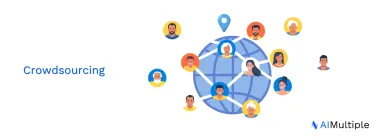
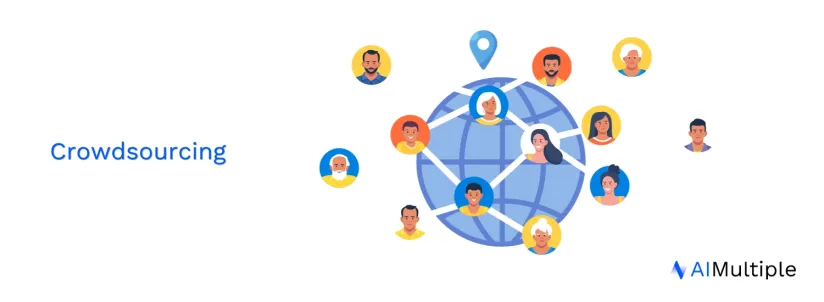

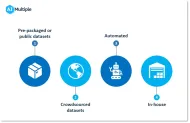
Comments
Your email address will not be published. All fields are required.